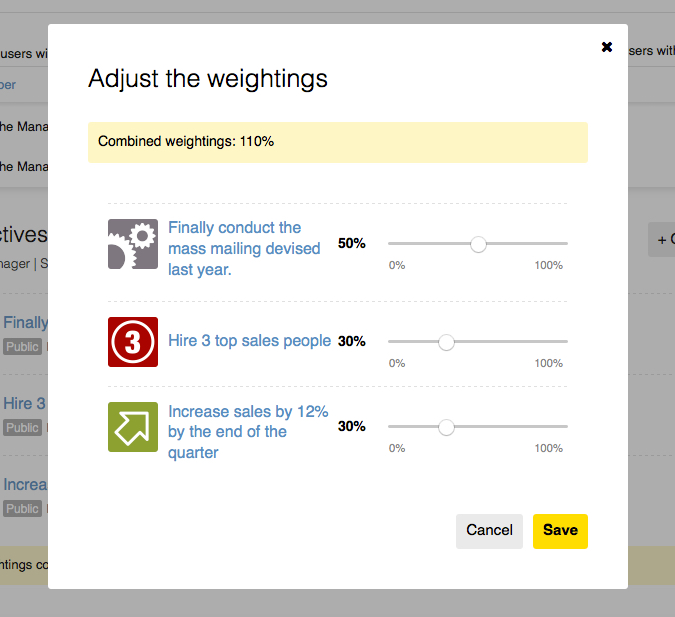What do dating app Bumble, social media management platform Hootsuite, and pharmaceutical company Bristol Myers Squibb all have in common? Each of these employers offers company-wide vacations, giving the entire company the same day or collective week off work, in addition to allotted personal leave.
This growing trend is a powerful way to invest in staff wellbeing, combat employee burnout and improve workforce retention. Our guide digs into these benefits for employees and what they could mean for your business.
Traditional vacations aren’t working
Countries around the world vary in their approach to offering paid time off. For example, EU workers typically receive 20 paid vacation days as a baseline, which contrasts with 23% of US workers who aren’t guaranteed any form of paid vacation.
But employees lucky enough to receive paid time off aren’t necessarily taking their full entitlement. This is especially true of the 6% of companies that offer unlimited paid vacation, where employees don’t take advantage of the perk due to scheduling difficulties or the challenges of offloading their work to team members.
Korn Ferry research highlights that 63% of employees planned to take a shorter vacation during 2022 than previously, while 37% admitted to connecting to work multiple times each day while away (up from 19% in 2021.) Some common problems with traditional vacations include:
1. Responding to Slack and email notifications
Turning on your email OOO is one thing, but if you still receive email notifications and Slack pings on your phone or iPad, you’ll add a layer of stress and anxiety to your vacation. Even disabling these settings from your mobile devices can be a struggle — the reality is most people still end up logging in to check what’s going on at work.
2. Taking team Zoom calls from the beach
Trying to schedule team meetings around the globe can be a challenge. And if the only date people can make clashes with your vacation, it’s tempting to agree to dial in for a Zoom call. From prepping for the meeting, to worrying about weak internet connectivity from your beach hut, it’s not a great way to relax and rejuvenate.
3. Urge to check-in
No matter how much you try to disconnect, the urge to check in and read a barrage of emails can be overwhelming. Leaders and managers may struggle to trust the person they’ve delegated to, while individual contributors can spend their entire leave worrying their superiors will uncover a mistake.
4. Career FOMO
When you’re away from the office, images of colleagues achieving career milestones can often creep into your mind. As the fear of missing out (FOMO) begins to set in, you’ll worry that colleagues are learning about new career opportunities, having meaningful development discussions, and climbing the corporate ladder while you’re soaking up the sun.
The science behind restorative vacation
Switching off from work is tough—especially in a digital world. But it’s essential and could even prolong your life. In fact, a 40-year study published in the Journal of Nutrition, Health & Aging finds that people taking less than three weeks of annual leave have a 37% higher chance of dying.
Similarly, Tampere University released a study at the beginning of the pandemic explaining that regular and sustained vacation holds the key to maintaining mental health. However, the time off must involve unplugging from work communications entirely for full work detachment.
Enter company-wide vacations
As we’ve seen, downtime is essential, but encouraging workers to book a break and switch off during their scheduled PTO is a constant battle. Companies can tackle this issue head-on by offering company-wide or “forced” vacations.
These initiatives work by dedicating a certain time of the year when all employees are encouraged to take a vacation and unplug from work simultaneously. This is different from a company retreat, where employees vacation together to enhance team bonding. Instead, the idea is that company operations shut down, and everyone goes their separate ways for a week of rest and recovery. There’s no pull for employees to check their inbox or Asana board, because no one should be messaging.
Companies can choose when to schedule these breaks, but summer and the winter holiday season are two popular times. PwC provided two week-long breaks for its 60,000 US employees in July and December as part of a $2.4 billion investment into employee benefits and wellbeing. Crucially, this is in addition to individual vacation time, so the workforce still receives its regular allowance, which they may even tag onto the end of the company break to extend their rest.
Founder and CEO Kathryn Minshew weighs in on why The Muse opts for a week-long summer break:
A company-wide break encourages all team members to unplug knowing their colleagues aren’t online either. There’s less frenzy, more freedom to be present with friends and family or simply enjoy some solo peace and quiet. And though not every business is structured in a way where all employees can log off (and in fact, we did have a few folks on rotation to make sure anything truly urgent was attended to!), finding opportunities for company-wide breaks is a great way to invest in your team’s long-term mental and physical wellbeing.
Challenges of adopting company-wide holidays
While company shutdowns may sound like the perfect solution for keeping your workforce refreshed and productive, this can be a complex strategy to execute. Some challenges include:
Using the time off to catch up
With the best will in the world, some workers really struggle with the concept of taking time off. They may even see the break as a chance to get ahead by prepping for that huge presentation, sifting through a backlog of inquiries, or catching up on some admin. Solve this by establishing time-off policies with clear ground rules on permissible communication — make it clear that employees need to take the opportunity to switch off.
Catching up on a mountain of work
With everyone vacationing in tandem, no one has handled your tasks while you’re out of the office. Returning to an overflowing inbox and urgent client queries can feel overwhelming, so it pays to prepare in advance. Ensure your teams meet deadlines and answer all queries before the vacation starts. And consider implementing no-meeting days in your first week to let everyone get their head down and catch up.
Communicating your intentions with customers
Naturally, you may feel uneasy about disappearing for a week and leaving customers high and dry. To alleviate this, you must alert them in advance of your plans and explain the benefits of having a refreshed and productive workforce to deliver the highest possible level of service to them.
Offer reassurance that you’ll answer urgent queries as soon as possible when you’re back in the office. Or provide emergency contact options if they need to get in touch. If it’s impossible to shut down your operations entirely, consider using a skeletal staff to handle customer service queries. This core team can take their week’s vacation as soon as the shutdown is over.
Rest your workforce en masse
Company-wide vacations provide an invaluable opportunity to reset and recharge the entire staff in one fell swoop. It’s a great way to show your employees that you value their well-being and mental health, which can lead to improved engagement and productivity. It also sends a message to customers that you have an eye for the long-term and are dedicated to delivering high-quality services. Ultimately, it’s a win-win situation for everyone.
Nevertheless, company shutdowns do take some organizing. The best way to prepare for them is to involve your workforce in creating a strategy that alleviates the stress of a mass vacation rather than generating extra pressure before and after.
Small Improvements offers a suite of tools to support staff engagement, including:
- Pulse Surveys: Tap into employee sentiment by regularly sending out brief surveys to understand if your workforce could benefit from a company shutdown. Ask questions related to the timing of the vacation and to understand any challenges your employees could face.
- 1:1 Meetings: Regular manager check-ins enable employees to discuss their individual challenges with taking leave in tandem with their colleagues. Use this opportunity to manage capacity planning and distribute tasks across your team to ensure no one is overloaded.
- Insights: Track attrition rates to understand if company-wide shutdowns are minimizing departures at your company. Our machine learning algorithm makes accurate predictions on employees most likely to leave, but ideally, your retention rates should improve when you take positive action to invest in wellbeing.
Incorporate Small Improvements into your employee engagement and retention initiatives by test-driving our suite of tools in a 14-day trial. Book a demo today to get started.



